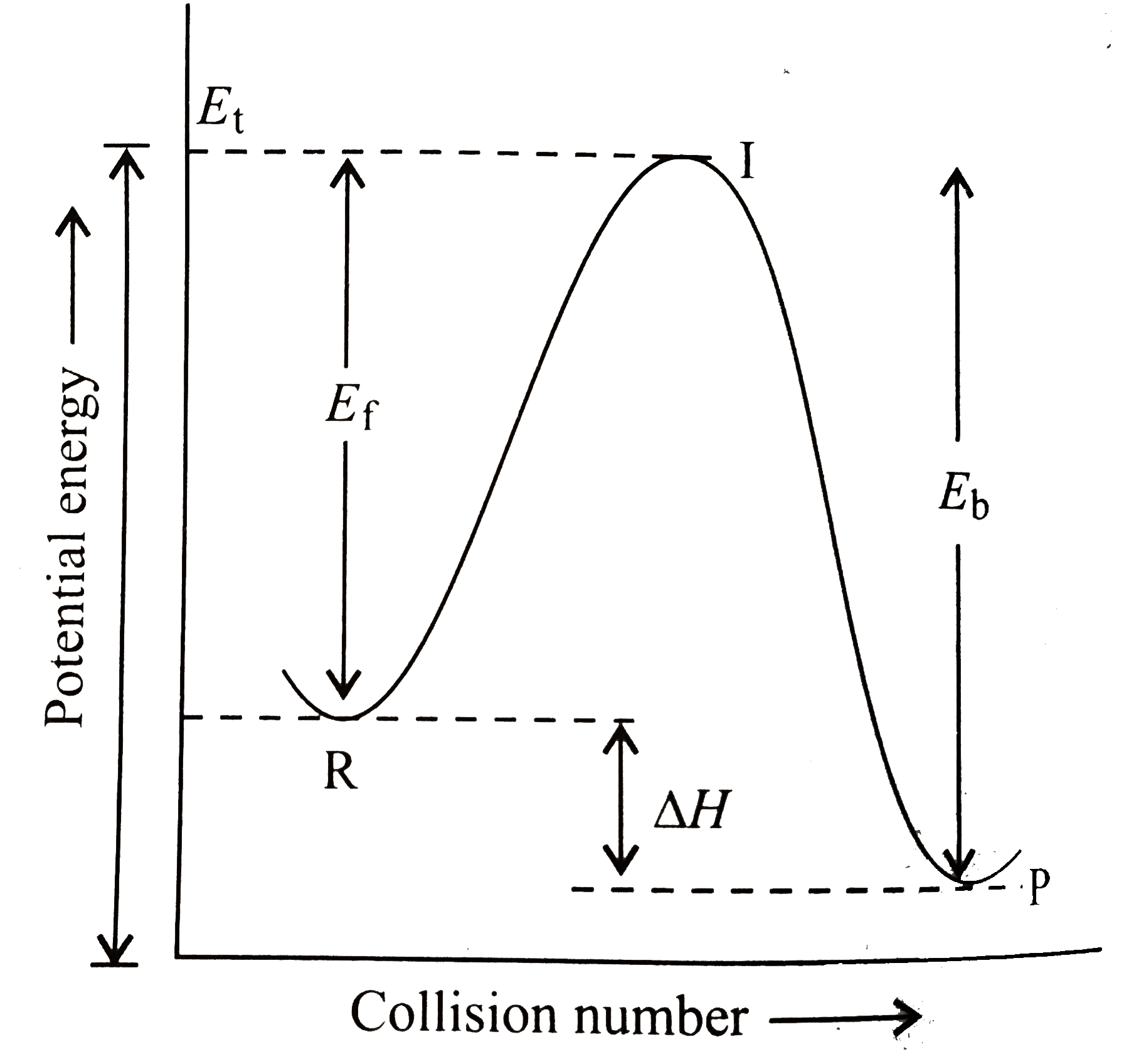How many times is the value of the rate constant compared to the value of the frequency factor if the activation energy (Ea) for a reaction is 2.303RT?Solution in Bengali
According to Arrhenius equation,
k=Ae−EaRT
If Ea=2.303RT, then k=Ae−2.303=0.1×A. Thus if the rate constant is 0.1 times to that of the frequency factor , then the activation energy will be 2.303 RT.
Topper's Solved these Questions
- BOOK - CHHAYA PUBLICATIONCHAPTER - CHEMICAL KINETICSEXERCISE - QUESTION-ANSWER ZONE FOR BOARD EXAMINATION (VERY SHORT ANSWER TYPE)35videos
CHEMICAL KINETICS
- BOOK - CHHAYA PUBLICATIONCHAPTER - CHEMICAL KINETICSEXERCISE - SOLVED WBCHSE SCANNER (2014)3videos
CHEMICAL KINETICS
- BOOK - CHHAYA PUBLICATIONCHAPTER - CHEMICAL KINETICSEXERCISE - EXERCISE (NUMERICAL PROBLEMS)37videos
CHEMICAL KINETICS
- BOOK - CHHAYA PUBLICATIONCHAPTER - BIOMOLECULESEXERCISE - Practic Set 291videos
BIOMOLECULES
- BOOK - CHHAYA PUBLICATIONCHAPTER - CHEMICAL THERMODYNAMICSEXERCISE - Practice Set 615videos
CHEMICAL THERMODYNAMICS
Similar Questions
For the reaction 12A2+32B2→AB3, express the rate in terms of decrease in concentration of the reactants and increase in concentration of the product.
03:47View Solution50% of a first order reaction gets completed in 10 min. What fraction of reactant of the above reaction would remain after 20min ?
10:29View Solution2A→4B+D , in this reaction, concentration of B increases to 2×10−3mol.L−1 after 10s from the start of the reaction . Calculate : rate of formation of B
10:29View SolutionWrite down the structure of tripeptide Gly-Ala-Val.
10:29View SolutionThe condition for spontaneity of process is
03:00View SolutionThe activation energy of a reaction is 94.14 kJ mol^(-1) and the value of rate constant at 313 K is 18 xx 10^(-5) s^(-1) . Calculate the frequency factor or pre-exponential factor, A .
View SolutionA colliison between reactant molecules must occur with a certain minimum energy before it is effective in yielding Product molecules. This minimum energy is called activation energy Ea Large the value of activation energy, smaller the value of rate constant k. Larger is the value of activation energy, greater is the effect of temperature rise on rate constant k.

Ef= Activation energy of forward reaction
Eb= Activation energy of backward reaction
ΔH=Ef−Eb
Ef= threshold energy
For two reactions, activation energies are Ea1 and Ea2, rate constant are k1 and k2 at the same temperature. If k1>k2, then06:08View SolutionA colliison between reactant molecules must occur with a certain minimum energy before it is effective in yielding Product molecules. This minimum energy is called activation energy E_(a) Large the value of activation energy, smaller the value of rate constant k . Larger is the value of activation energy, greater is the effect of temperature rise on rate constant k . E_(f) = Activation energy of forward reaction E_(b) = Activation energy of backward reaction Delta H = E_(f) - E_(b) E_(f) = threshold energy The rate constant of a certain reaction is given by k = Ae^(-E_(a)//RT) (where A = Arrhenius constant). Which factor should be lowered so that the rate of reaction may increase?
03:31View SolutionA colliison between reactant molecules must occur with a certain minimum energy before it is effective in yielding Product molecules. This minimum energy is called activation energy E_(a) Large the value of activation energy, smaller the value of rate constant k . Larger is the value of activation energy, greater is the effect of temperature rise on rate constant k . E_(f) = Activation energy of forward reaction E_(b) = Activation energy of backward reaction Delta H = E_(f) - E_(b) E_(f) = threshold energy The activation eneries for forward and backward reactions in a chemical reaction are 30.5 and 45.4 kJ mol^(-1) respectively. The reaction is
05:51View SolutionThe activation energy for a reaction at the temperature T K was found to be 2.303RT J mol^(-1) . The ratio of the rate constant to Arrhenius factor is
05:09View SolutionThe rate constant of a reaction at temperature 200K is 10 times than the rate constant at 400K . What is the activation energy ( E_(a) ) of the reaction (R=gas constant) ?
09:37View SolutionThe rate constant of a first order reaction can be determined by the equation: logk=12.6−4267TK. Calculate the energy of activation (Ea) and frequency factor (A) of the reaction.
06:45View SolutionWhat will the activation energy of a reaction be if rate constant equals the frequency factor ?
10:21View SolutionAt 300K , frequency factor (A) of a first order reaction is 1000 times its rate constant . The activation energy of the reaction ("in kJ. Mol"^(-1)) is -
04:04View SolutionThe activation energy of a reaction is 94.14 KJ/mol and the value of rate constant at 40^@ C is 1.8 xx 10^(-1) sec^(-1) . Calculate the frequency factor A.
04:06View Solution

